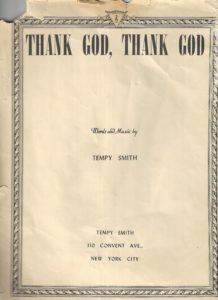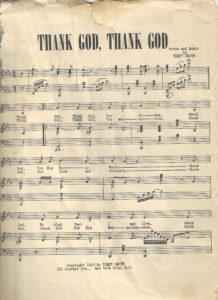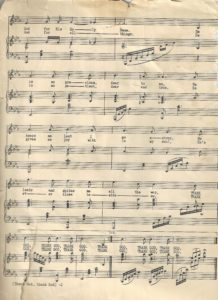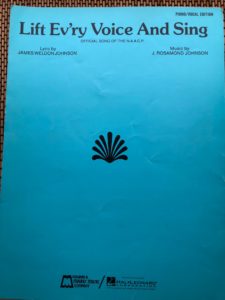

 Tempy’s songs were sacred. As we draw closer to the season of Easter I think of Madame Tempy Smith, my paternal grandmother, who became a religious person during her later years. I wish I met her during her younger years when she worked on our family’s dairy farm and was said to like blues and jazz, and what she later called the ‘devil’s music.’ I would have loved to have had conversations with her about many things. Although classically trained at a conservatory and well-versed in blues and jazz, Tempy’s true calling was helping people and religious music. When she arrived in Harlem during the height of the Harlem Renaissance, she began composing sacred music in earnest all the while developing a real estate empire, and establishing her famous music and art schools.
Tempy’s songs were sacred. As we draw closer to the season of Easter I think of Madame Tempy Smith, my paternal grandmother, who became a religious person during her later years. I wish I met her during her younger years when she worked on our family’s dairy farm and was said to like blues and jazz, and what she later called the ‘devil’s music.’ I would have loved to have had conversations with her about many things. Although classically trained at a conservatory and well-versed in blues and jazz, Tempy’s true calling was helping people and religious music. When she arrived in Harlem during the height of the Harlem Renaissance, she began composing sacred music in earnest all the while developing a real estate empire, and establishing her famous music and art schools.
Easter song, Negro Anthem, Negro Spirituals
Tempy was known to lead her pupils in the Negro Anthem Lift Every Voice and Sing to open her concerts and recitals, and especially on Easter. This song was especially important to her because it was originally a poem set to music. Reading, writing and reciting poetry were key parts of her elocution and theater classes taught at her music and art schools. The song, aka NAACP’s theme song, was created by two brothers, who were family friends James Weldon Johnson (lyrics/poem) and J. Rosamond Johnson (composer). Click here to learn the lyrics. Negro Spirituals Go Down Moses and Swing Low Sweet Chariot as sung by another family friend Paul Robeson, were also Tempy favorites.
Tempy’s song of gratitude

Madame Tempy loved songs that told stories. Her sacred songs were about gratitude. Thank God, Thank God was believed to have been written on Easter Sunday, her first day in Harlem after traveling and performing for two years on the road with her musical family. Here is an excerpt of some lyrics: “Thank God, Thank God, for Je—–sus, Thank God, for His Ho—–ly Word—–Thank God, He died that I may live, Thank God for His Ho—–ly Name. He is so Pre—–cious, dear to me, He keeps me lest I go a—–stray, He leads me and guides me all the way, Thank God, Thank God, Thank God Thank God.”
I recently shared some of Madame Tempy’s original composition with friends from my family archives. She apparently composed many songs while still a student. But it looked like she only began publishing her original songs once she left the South and moved North. Education records revealed that sacred music was Madame Tempy’s major course of study while she was a Boston Conservatory student.
Because of Tempy, I believe I developed a love of church music. I’m certain it is because of her that I expanded my spirituality, religion appreciation, and developed a love of many music genres.
Researching at the Schomburg Center for Research in Black Culture
While researching Madame Tempy’s life for ongoing media projects at Harlem’s famed Schomburg Center for Research in Black Culture, I found photos of her music schools, news clips, programs from her pupil’s recitals, and much more. Talented and determined Black folks like Tempy did not have the benefit of The Negro Motorist Green Book to guide her travels during a dangerous road trip from Ocean Springs, Mississippi to Harlem, New York in the 1920s. She depended on our black community’s ‘grapevine,’ a tight network of friends and families, black churches, and ‘word-of-mouth.’ Whether you were born with music genes or not, I believe music set us free.

Madame Tempy’s Music Genes
“Madame Tempy’s musical and business skills were fully realized when she joined others who were part of the Harlem Renaissance. A courageous person with a dictatorial personality, she became a real estate entrepreneur, sacred music composer, and legendary piano teacher. With every Harlem apartment building that she purchased a music school was set-up, and rehearsal studios and rooms were rented. She employed all of her children, nieces, nephews and many extended family members.” Click here to read more about Tempy’s songs.